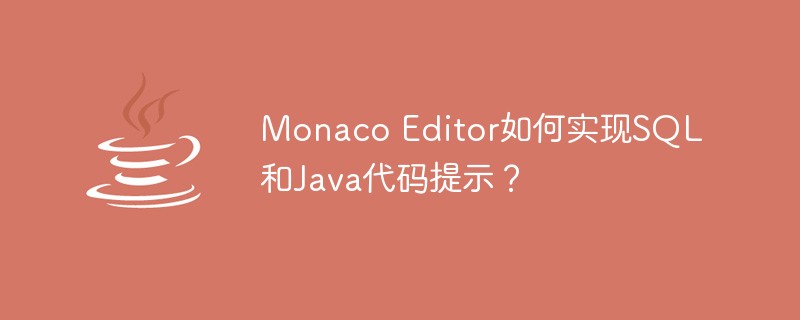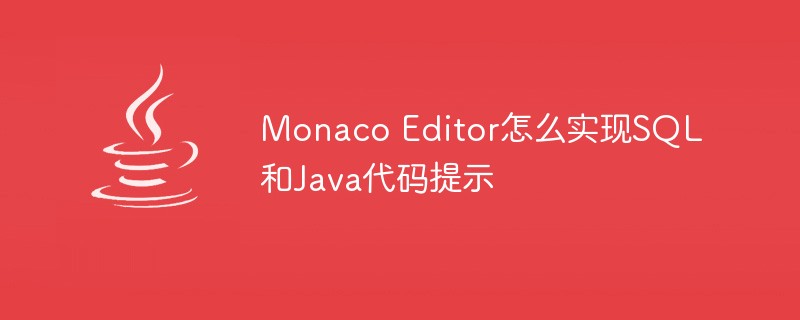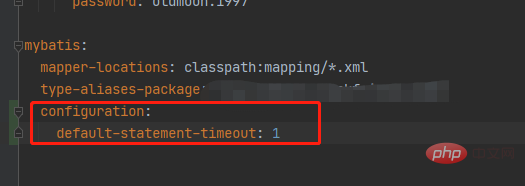The difference between sql and mysql syntax: 1. Mysql supports enum and set types, but sql does not support it; 2. MySQL’s increment statement is AUTO_INCREMENT, while SQL is identity(1,1); 3. Same Under load pressure, MySQL consumes less CPU and memory, while SQL consumes resources.

The syntax difference between MySQL and SQLServer
1. MySQL supports enum and set types, but SQL Server does not.
2. MySQL does not support nchar, nvarchar, ntext types
3. MySQL’s increment statement is AUTO_INCREMENT, while SQL is identity(1,1)
4. SQL By default, the default value of the table creation statement is ((0)), and two parentheses are not allowed in MySQL
5. MySQL needs to specify the storage type for the table
6. The SQL identifier is [], [type], which means it is different from keywords, but MySQL is `, which is the symbol on the left side of button 1
7. SQL supports the getdate() method to obtain the current time and date. However, MySQL can be divided into date type and time type. To obtain the current date is current_date (), and the current complete time is the now() function
8. MS SQL does not support the replace into statement, but in the latest sql20008, Merge syntax is also supported
9. MySQL supports
insert into table1 set t1 = „‟, t2 = „‟
but MS SQL does not support writing like this
10. MySQL supports
insert into tabl1 values (1,1), (1,1), (1,1), (1,1), (1,1), (1,1), (1,1)
11. MySQL is creating When creating a table, you must specify a storage engine type for each table, and MS SQL only supports one storage engine
12. MySQL does not support the datetime type whose default value is the current time (MS SQL is easy to do). In MySQL, the timestamp type is used
13. In MS SQL, to check whether the table exists before deleting it, you need this:
if exists (select * from dbo.sysobjects where id = object_id(N’uc_newpm’) and OBJECTPROPERTY(id,N’IsUserTable’)=1)
But in MySQL, you only need
DROP TABLE IF EXISTS cdb_forums;
14 , MySQL supports unsigned integers, so it can store double the maximum number than MS SQL that does not support unsigned integers
15. MySQL does not support the use of varchar() which is very convenient in MS SQL. max) type, this type can be used for both general data storage and blob data storage in MS SQL
16. To create a non-clustered index in MySQL, you only need to specify it as the key when creating the table, for example:
KEY displayorder (fid,displayorder)
In MS SQL it is necessary to:
create unique nonclustered index index_uc_protectedmembers_username_appid on dbo.uc_protectedmembers (username asc,appid asc)
17. The MySQL text field type does not allow default values
18. The total field length of a MySQL table does not exceed 65XXX.
19. A very superficial difference is that the installation of MySQL is very simple, and the file size is only 110M (non-installation version). Compared with the behemoth Microsoft, the installation progress is simply...
20. MySQL’s stored procedures only appear in the latest version, and their stability and performance may not be as good as MS SQL.
21. Under the same load pressure, MySQL consumes less CPU and memory, while MS SQL is indeed very resource-consuming.
22. The ifnull() function of mysql corresponds to the isnull() function of sql;
23. Remove the definition of variables in the stored procedure of mysql@;
24.mysql Each sentence must end with ";"
25. The AS of SQLServer stored procedure needs to be replaced with begin...end in MySql
The above is the detailed content of What is the difference between sql and mysql syntax. For more information, please follow other related articles on the PHP Chinese website!
 SQL Server使用CROSS APPLY与OUTER APPLY实现连接查询Aug 26, 2022 pm 02:07 PM
SQL Server使用CROSS APPLY与OUTER APPLY实现连接查询Aug 26, 2022 pm 02:07 PM本篇文章给大家带来了关于SQL的相关知识,其中主要介绍了SQL Server使用CROSS APPLY与OUTER APPLY实现连接查询的方法,文中通过示例代码介绍的非常详细,下面一起来看一下,希望对大家有帮助。
 SQL Server解析/操作Json格式字段数据的方法实例Aug 29, 2022 pm 12:00 PM
SQL Server解析/操作Json格式字段数据的方法实例Aug 29, 2022 pm 12:00 PM本篇文章给大家带来了关于SQL server的相关知识,其中主要介绍了SQL SERVER没有自带的解析json函数,需要自建一个函数(表值函数),下面介绍关于SQL Server解析/操作Json格式字段数据的相关资料,希望对大家有帮助。
 聊聊优化sql中order By语句的方法Sep 27, 2022 pm 01:45 PM
聊聊优化sql中order By语句的方法Sep 27, 2022 pm 01:45 PM如何优化sql中的orderBy语句?下面本篇文章给大家介绍一下优化sql中orderBy语句的方法,具有很好的参考价值,希望对大家有所帮助。
 Monaco Editor如何实现SQL和Java代码提示?May 07, 2023 pm 10:13 PM
Monaco Editor如何实现SQL和Java代码提示?May 07, 2023 pm 10:13 PMmonacoeditor创建//创建和设置值if(!this.monacoEditor){this.monacoEditor=monaco.editor.create(this._node,{value:value||code,language:language,...options});this.monacoEditor.onDidChangeModelContent(e=>{constvalue=this.monacoEditor.getValue();//使value和其值保持一致i
 一文搞懂SQL中的开窗函数Sep 02, 2022 pm 04:55 PM
一文搞懂SQL中的开窗函数Sep 02, 2022 pm 04:55 PM本篇文章给大家带来了关于SQL server的相关知识,开窗函数也叫分析函数有两类,一类是聚合开窗函数,一类是排序开窗函数,下面这篇文章主要给大家介绍了关于SQL中开窗函数的相关资料,文中通过实例代码介绍的非常详细,需要的朋友可以参考下。
 如何使用exp进行SQL报错注入May 12, 2023 am 10:16 AM
如何使用exp进行SQL报错注入May 12, 2023 am 10:16 AM0x01前言概述小编又在MySQL中发现了一个Double型数据溢出。当我们拿到MySQL里的函数时,小编比较感兴趣的是其中的数学函数,它们也应该包含一些数据类型来保存数值。所以小编就跑去测试看哪些函数会出现溢出错误。然后小编发现,当传递一个大于709的值时,函数exp()就会引起一个溢出错误。mysql>selectexp(709);+-----------------------+|exp(709)|+-----------------------+|8.218407461554972
 Monaco Editor怎么实现SQL和Java代码提示May 11, 2023 pm 05:31 PM
Monaco Editor怎么实现SQL和Java代码提示May 11, 2023 pm 05:31 PMmonacoeditor创建//创建和设置值if(!this.monacoEditor){this.monacoEditor=monaco.editor.create(this._node,{value:value||code,language:language,...options});this.monacoEditor.onDidChangeModelContent(e=>{constvalue=this.monacoEditor.getValue();//使value和其值保持一致i
 springboot配置mybatis的sql执行超时时间怎么解决May 15, 2023 pm 06:10 PM
springboot配置mybatis的sql执行超时时间怎么解决May 15, 2023 pm 06:10 PM当某些sql因为不知名原因堵塞时,为了不影响后台服务运行,想要给sql增加执行时间限制,超时后就抛异常,保证后台线程不会因为sql堵塞而堵塞。一、yml全局配置单数据源可以,多数据源时会失效二、java配置类配置成功抛出超时异常。importcom.alibaba.druid.pool.DruidDataSource;importcom.alibaba.druid.spring.boot.autoconfigure.DruidDataSourceBuilder;importorg.apache.


Hot AI Tools

Undresser.AI Undress
AI-powered app for creating realistic nude photos

AI Clothes Remover
Online AI tool for removing clothes from photos.

Undress AI Tool
Undress images for free

Clothoff.io
AI clothes remover

AI Hentai Generator
Generate AI Hentai for free.

Hot Article

Hot Tools

ZendStudio 13.5.1 Mac
Powerful PHP integrated development environment

MinGW - Minimalist GNU for Windows
This project is in the process of being migrated to osdn.net/projects/mingw, you can continue to follow us there. MinGW: A native Windows port of the GNU Compiler Collection (GCC), freely distributable import libraries and header files for building native Windows applications; includes extensions to the MSVC runtime to support C99 functionality. All MinGW software can run on 64-bit Windows platforms.

Notepad++7.3.1
Easy-to-use and free code editor

VSCode Windows 64-bit Download
A free and powerful IDE editor launched by Microsoft

SAP NetWeaver Server Adapter for Eclipse
Integrate Eclipse with SAP NetWeaver application server.





